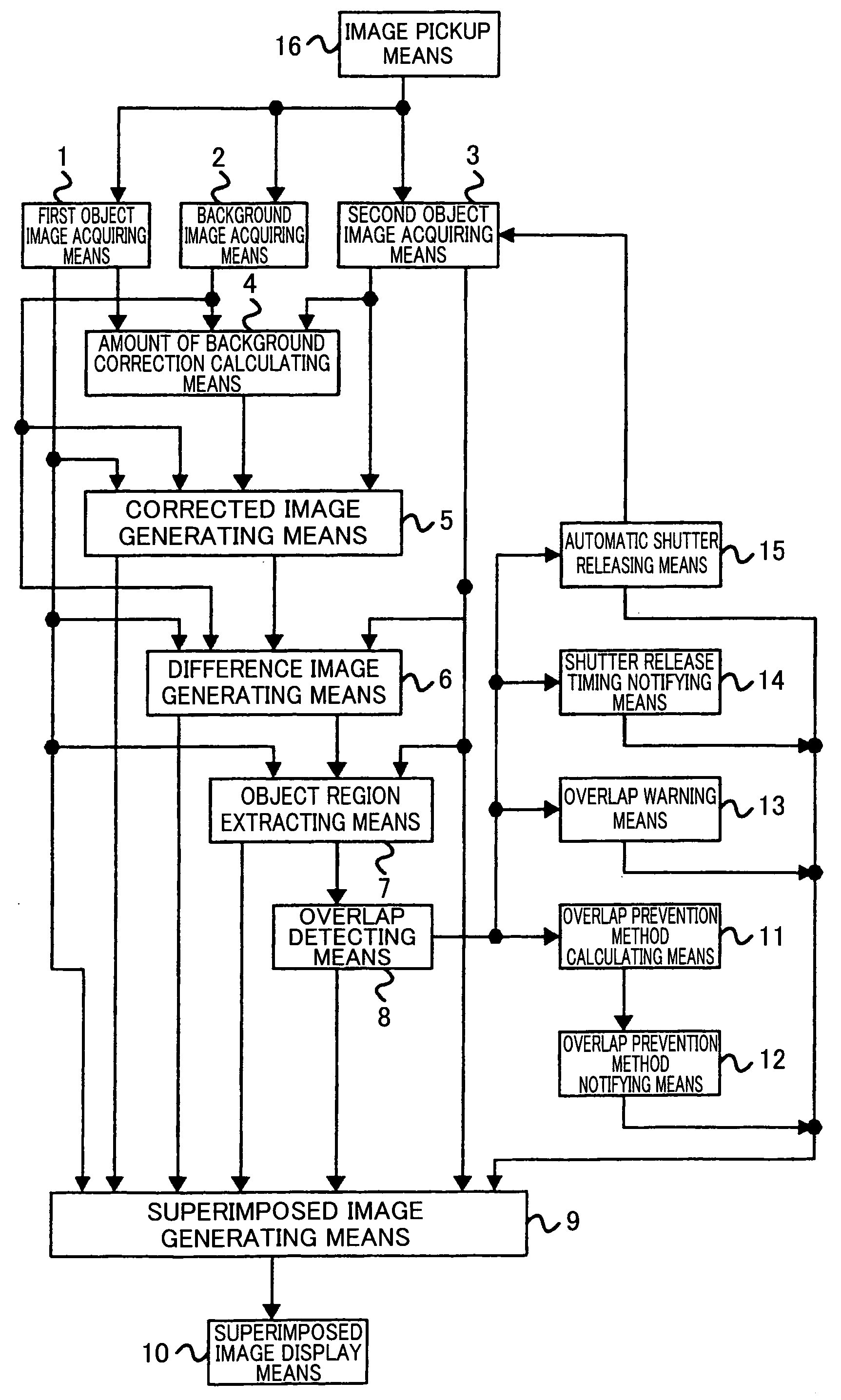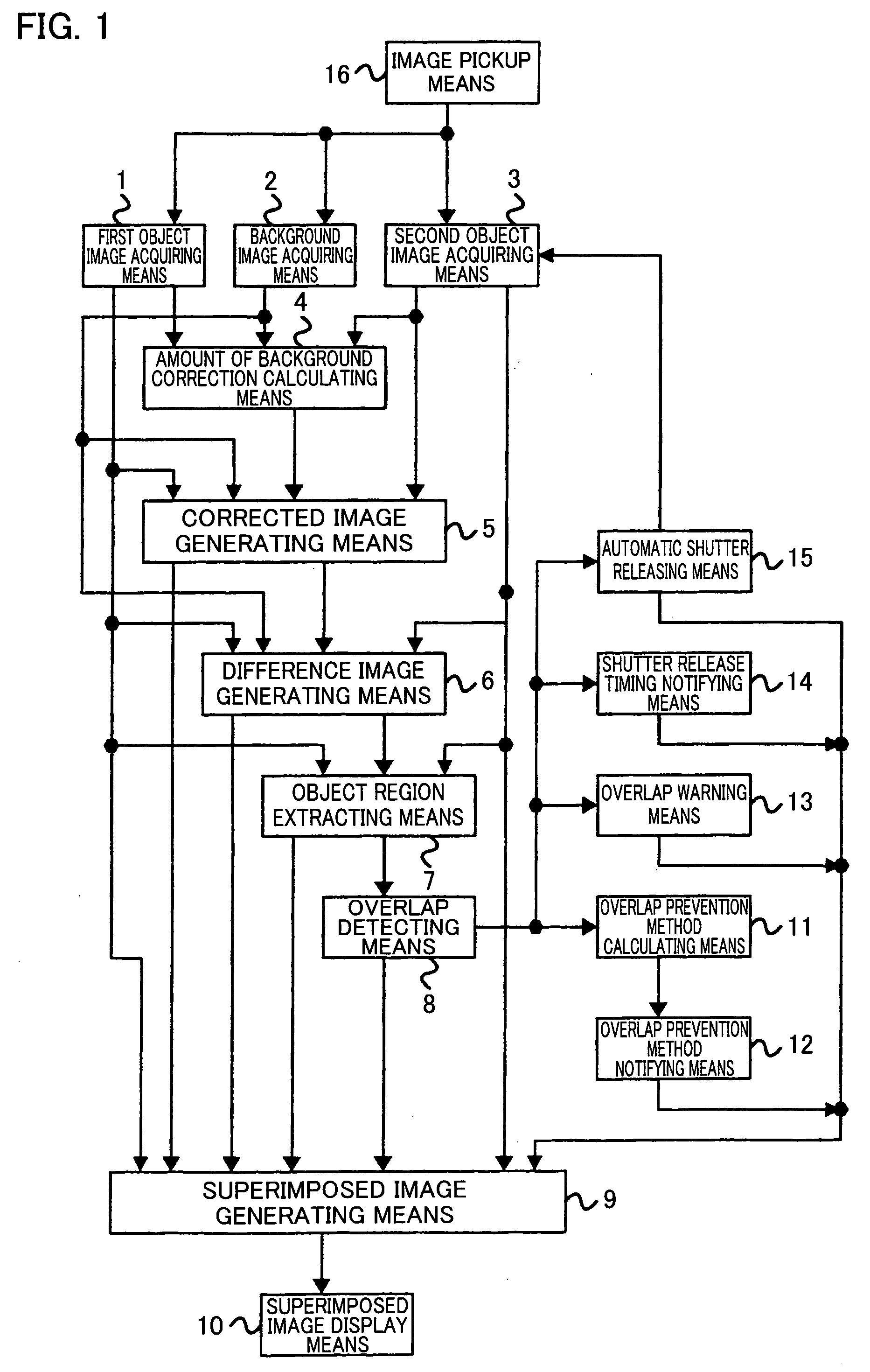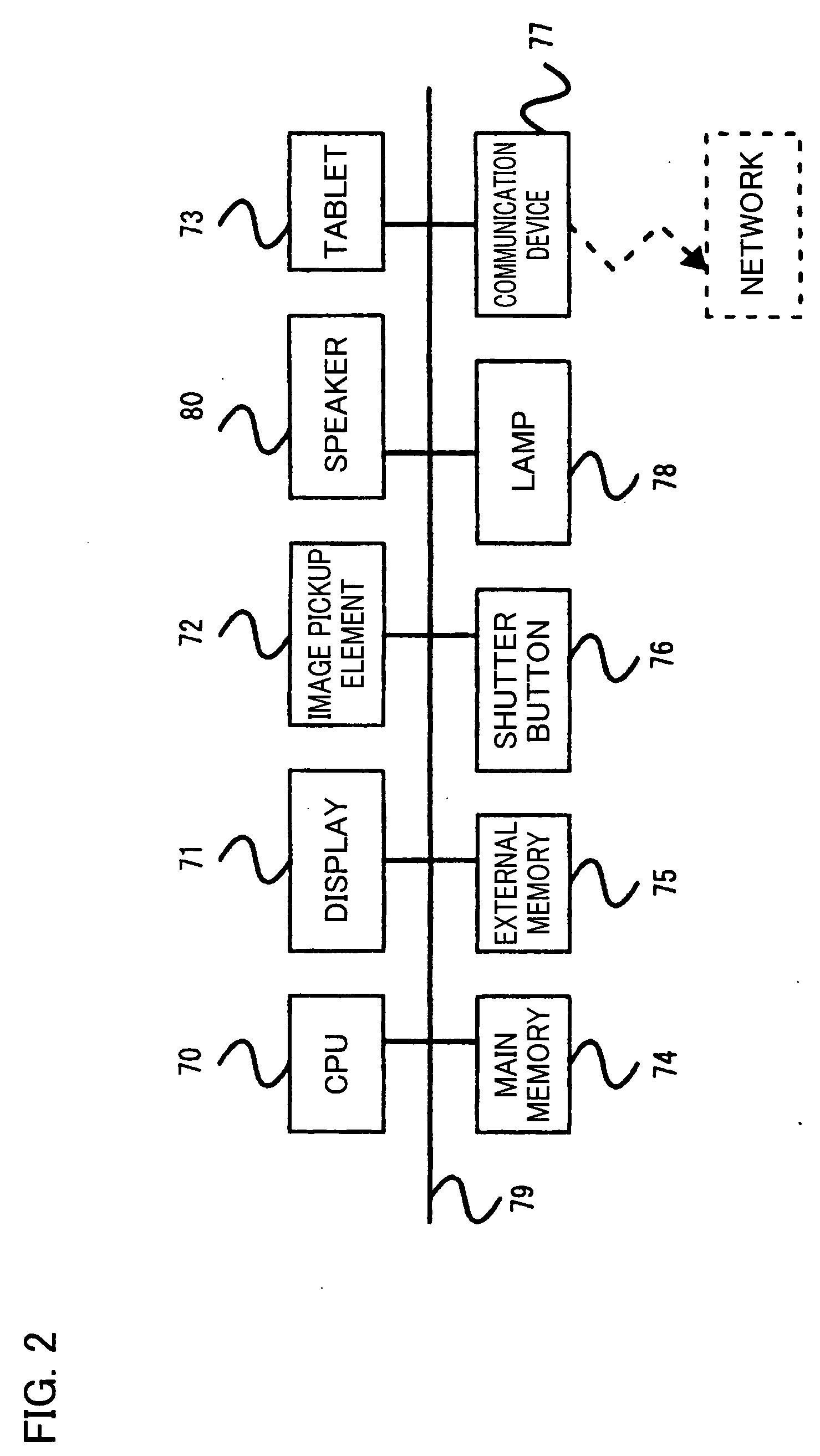Image combination device, image combination method, image combination program, and recording medium containing the image combination program
- Summary
- Abstract
- Description
- Claims
- Application Information
AI Technical Summary
Benefits of technology
Problems solved by technology
Method used
Image
Examples
embodiments 1
[0147] With reference to the drawings, the following describes embodiments of the present invention.
[0148] First, definitions of terms are set forth below.
[0149]“First object” and “second object” are objects to be combined. In general, these objects are persons, but they can be articles or the like. Strictly speaking, the “first object” is a region where pixel values do not correspond when a background portion of a background image and a background portion of a first object image overlap at least partially. In other words, any region where there is a change has a possibility to be a “first object region”. However, “any region where there is a change” could include a minor change in the background portion caused by leaves waving in the breeze. It is therefore preferable to ignore minor changes and small regions. The same holds true with the “second object”.
[0150] If the object is a person, the object is not necessarily a single person; a plurality of persons may collectively const...
embodiment 2
[0596] With reference to the drawings, the following describes another embodiment of the present invention. In EMBODIMENT 1, the background image is used in addition to the first object image and the second object image, and the background image does not include an object, but includes a background portion that corresponds to each object image at least partially. In EMBODIMENT 2, on the other hand, the background image is not used in combining images.
[0597] Again, definitions of terms are set forth below.
[0598]“First object” and “second object” are objects to be combined. In general, these objects are often persons, but they can be articles or the like. Strictly speaking, the “first object” is a region where pixel values do not correspond when a background image and a first object image are superimposed on each other so that at least a part of a background portion overlaps. In other words, any region where there is a change has a possibility to be a “first object region”. However,...
PUM
 Login to View More
Login to View More Abstract
Description
Claims
Application Information
 Login to View More
Login to View More - R&D
- Intellectual Property
- Life Sciences
- Materials
- Tech Scout
- Unparalleled Data Quality
- Higher Quality Content
- 60% Fewer Hallucinations
Browse by: Latest US Patents, China's latest patents, Technical Efficacy Thesaurus, Application Domain, Technology Topic, Popular Technical Reports.
© 2025 PatSnap. All rights reserved.Legal|Privacy policy|Modern Slavery Act Transparency Statement|Sitemap|About US| Contact US: help@patsnap.com



